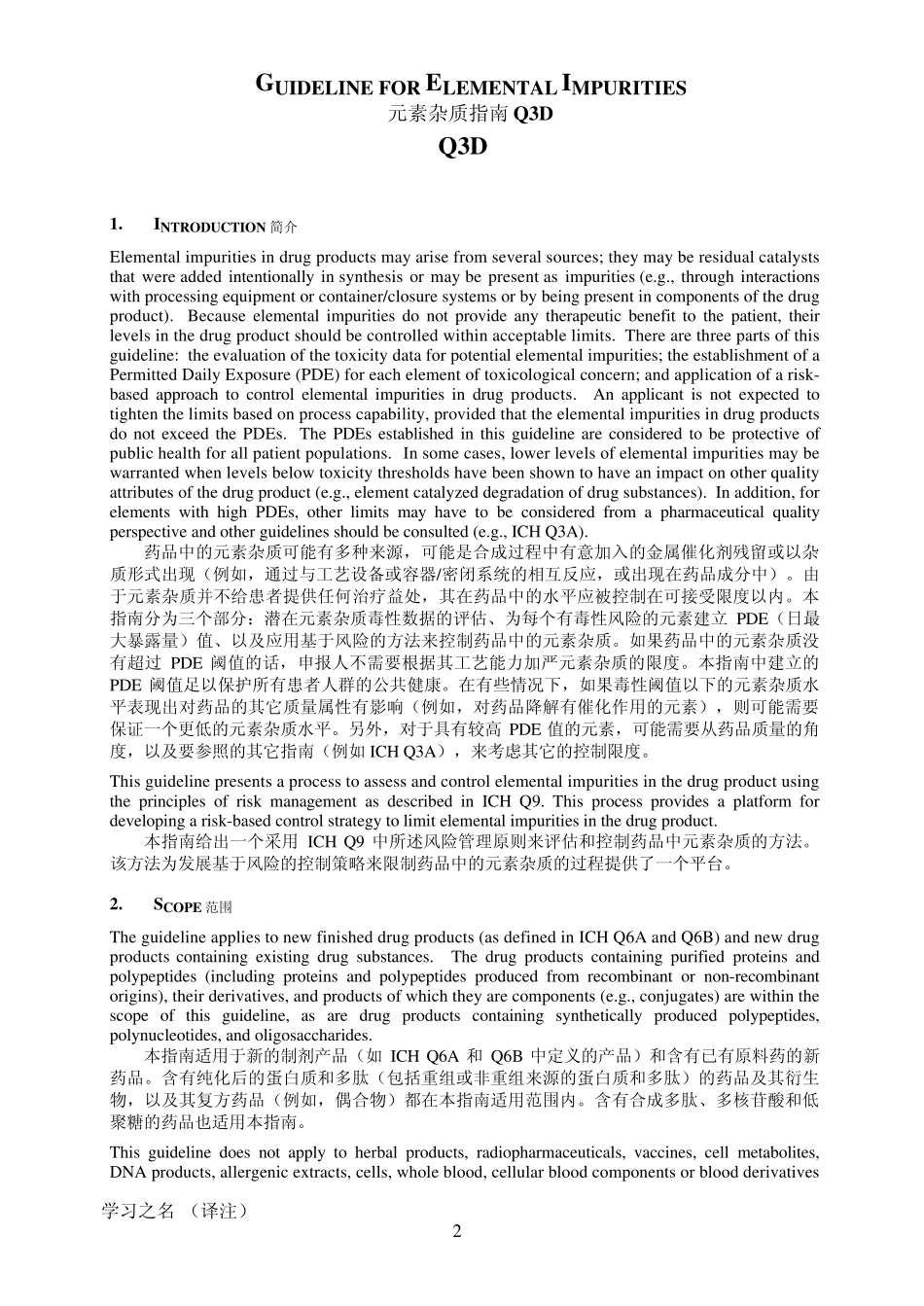1 学习之名 (译注) GUIDELINE FOR ELEMENTAL IMPURITIES 元素杂质指南 TABLE OF CONTENTS 目录 1. INTRODUCTION 简介 2. SCOPE 范围 3. SAFETY ASSESSMENT OF POTENTIAL ELEMENTAL IMPURITIES 潜在元素杂质的安全性评估 3.1 Principles of the Safety Assessment of Elemental Impu rities for Oral, Parenteral and Inhalation Rou tes of Administration 口服、注射和吸入给药途径的元素杂质安全性评估规则 3.2 Other Rou tes of Administration 其他给药途径 3.3 Ju stification for Elemental Impu rity Lev els Higher than an Established PDE 元素杂质水平高于已建立的PDE 阈值的合理性说明 3.4 Parenteral Produ cts 注射用药 4. ELEMENT CLASSIFICATION 元素分类 5. RISK ASSESSMENT AND CONTROL OF ELEMENTAL IMPURITIES 元素杂质的风险评估和控制 5.1 General Principles 通用准则 5.2 Potential Sou rces of Elemental Impu rities 元素杂质潜在的来源 5.3 Identification of Potential Elemental Impu rities 潜在元素杂质的识别 5.4 Recommendations for Elements to be Considered in the Risk Assessment 建议在风险评估中考虑的元素 5.5 Ev alu ation 评估 5.6 Su mmary of Risk Assessment Process 风险评估总结 5.7 Special Considerations for Biotechnologically -Deriv ed Produ cts 生物技术衍生产品的特殊考虑 6. CONTROL OF ELEMENTAL IMPURITIES 元素杂质控制 7. CONVERTING BETWEEN PDES AND CONCENTRATION LIMITS PDE 值和浓度限的相互转换 8. SPECIATION AND OTHER CONSIDERATIONS 元素形态和其他考虑 9. ANALYTICAL PROCEDURES 分析方法 10. LIFECYCLE MANAGEMENT 生命周期管理 2 学习之名 (译注) GUIDELINE FOR ELEMENTAL IMPURITIES元素杂质指南 Q3D Q3D 1. INTRODUCTION 简介 Elemental impurities in drug products may arise from several sources; they may be residual catalysts that were added intentionally in synthesis or may be present as impurities (e.g., through interactions with processing equipment or container/closure systems or by being p...


